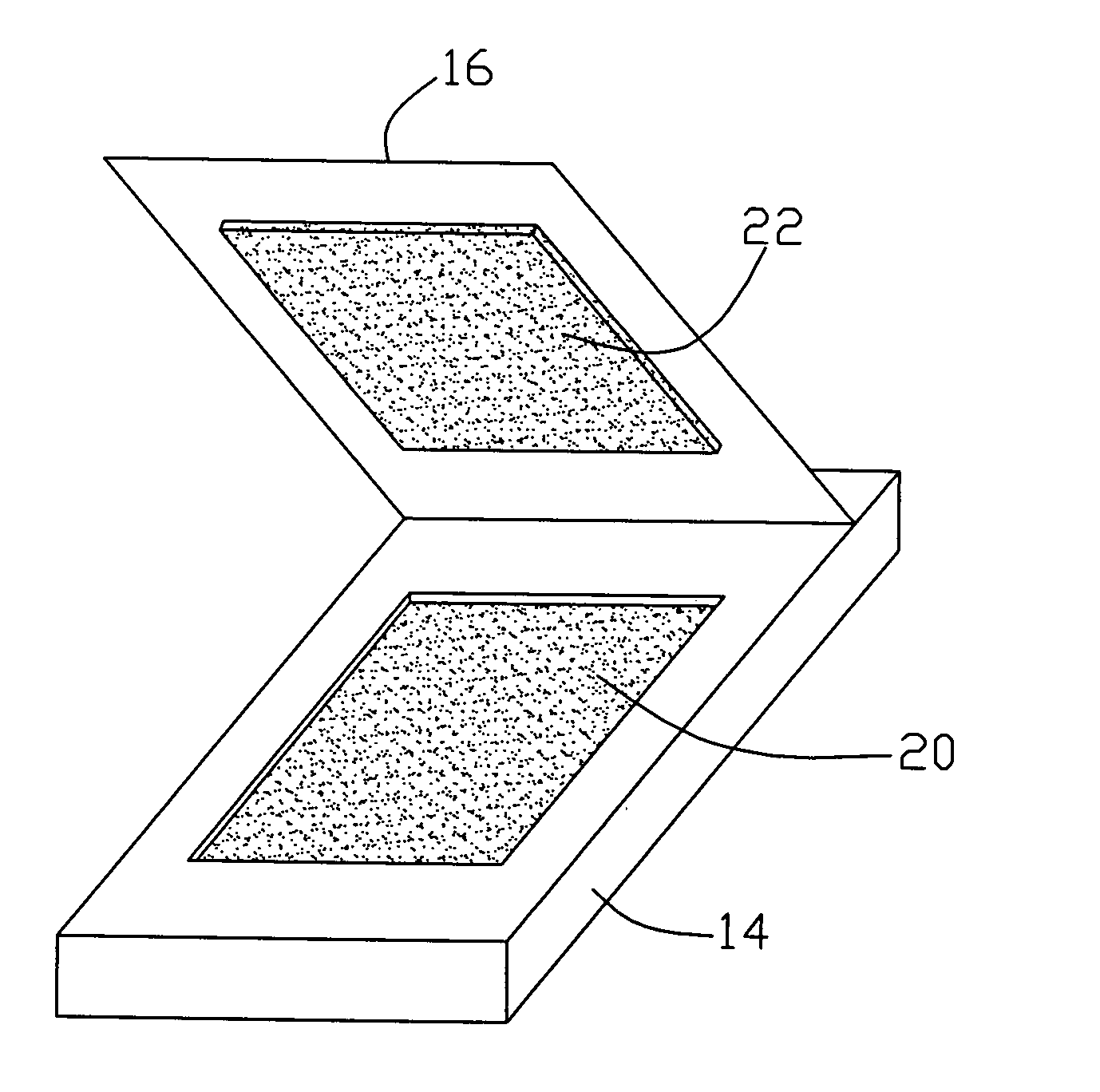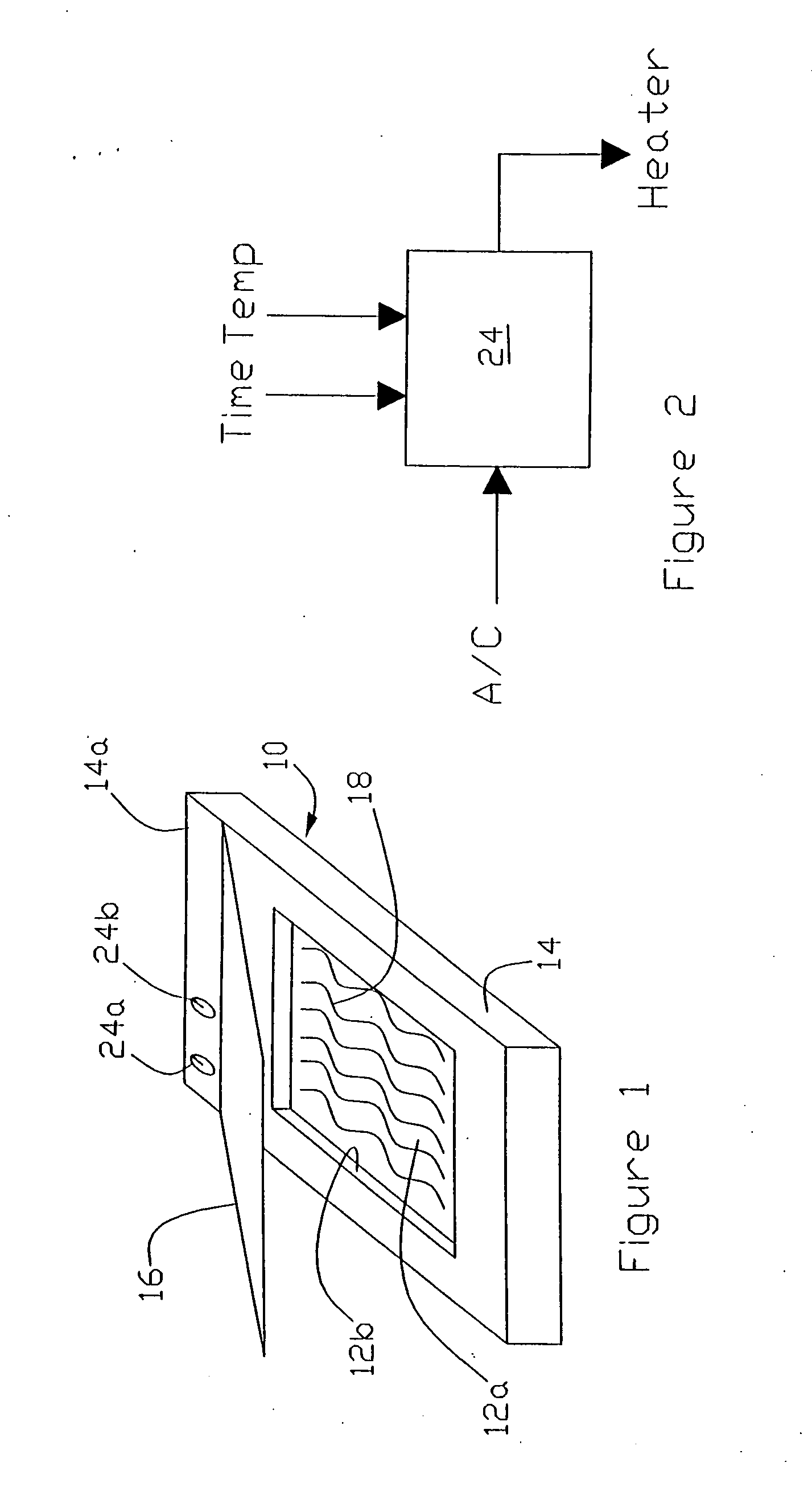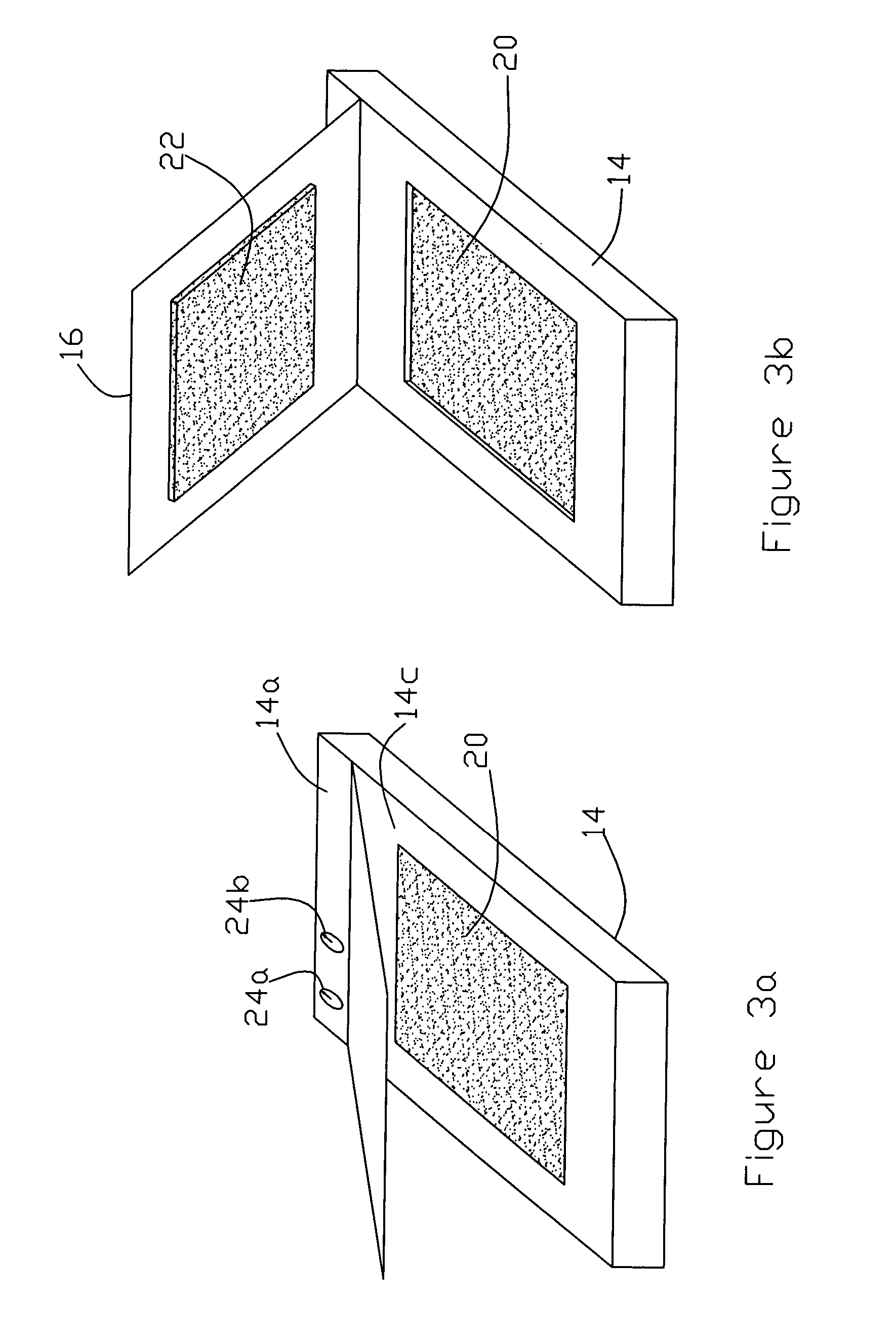Method of developing latent fingerprints
- Summary
- Abstract
- Description
- Claims
- Application Information
AI Technical Summary
Benefits of technology
Problems solved by technology
Method used
Image
Examples
Embodiment Construction
[0024]FIGS. 1-4b illustrate an apparatus 10 suitable for use in carrying out the method of the present invention. The apparatus includes a development compartment 12 formed between a central section of a base 14 and cover 16 hinged to an upper portion 14a of the base. The bottom portion 12a of the development compartment is provided with a heater in the form of electrical elements 18 positioned above the base bottom wall 11 and within an upwardly extending peripheral wall 12b terminating in a planar rim 14c surrounding the lower portion of the development compartment. A porous pad or sheet 20, such as blotter paper, containing the developer chemical compound (to be described) is disposed over the heating element. A resilient foam cushion 22 extends downwardly from the central portion of the cover and seats within the wall 12b when the cover is closed to form the development compartment within the peripheral wall and between the pad 18 and cushion 20. The development compartment may ...
PUM
 Login to View More
Login to View More Abstract
Description
Claims
Application Information
 Login to View More
Login to View More - R&D Engineer
- R&D Manager
- IP Professional
- Industry Leading Data Capabilities
- Powerful AI technology
- Patent DNA Extraction
Browse by: Latest US Patents, China's latest patents, Technical Efficacy Thesaurus, Application Domain, Technology Topic, Popular Technical Reports.
© 2024 PatSnap. All rights reserved.Legal|Privacy policy|Modern Slavery Act Transparency Statement|Sitemap|About US| Contact US: help@patsnap.com










